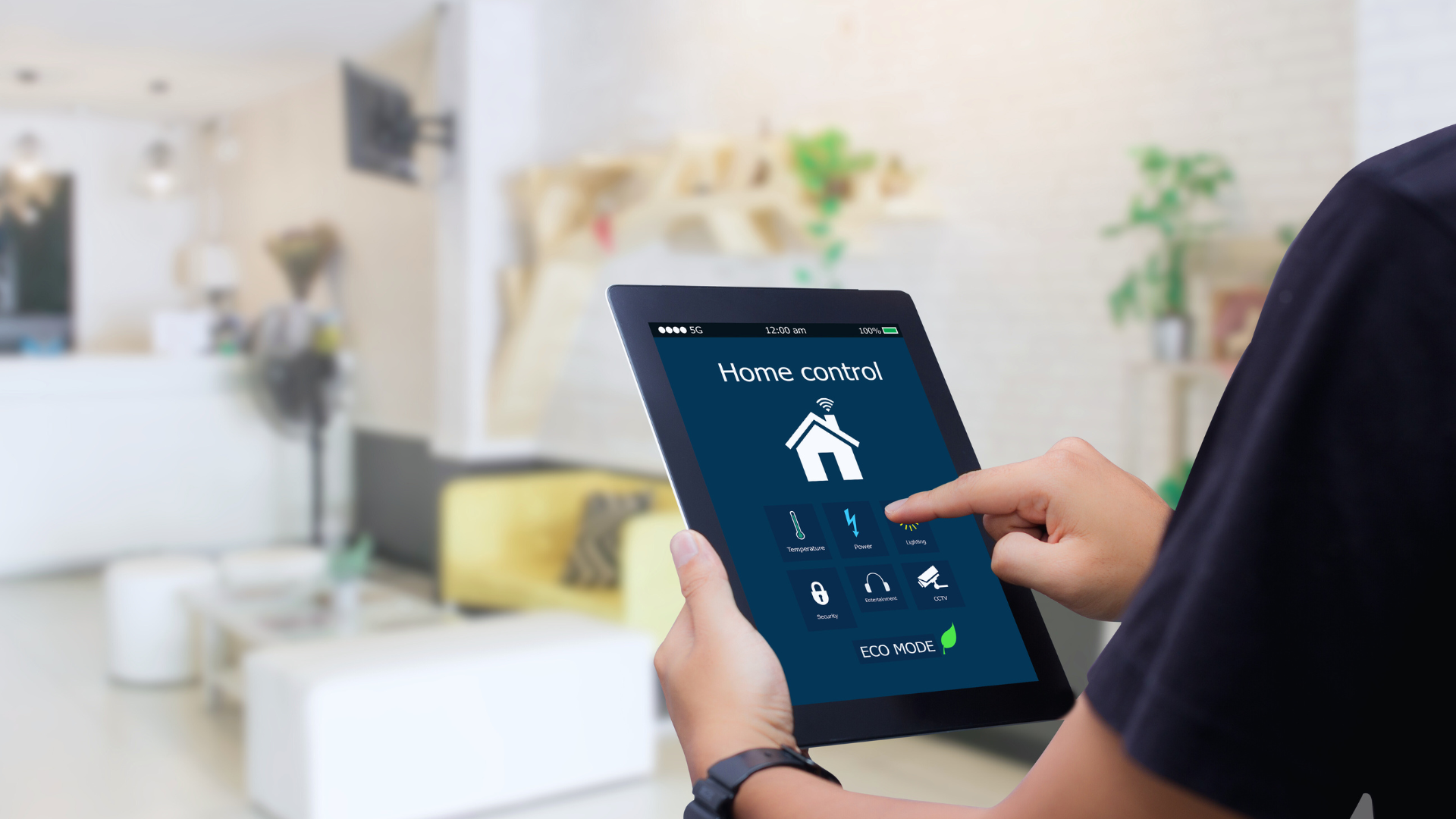Creating a smart home can seem expensive, but it doesn’t have to break the bank. By focusing on affordable technology and thoughtful design choices, anyone can enhance their living space without overspending. From DIY projects to strategic purchasing, there are many ways to achieve a modern aesthetic packed with functionality.
Budget-conscious homeowners can find numerous smart devices that offer both efficiency and style. Simple upgrades, such as smart bulbs or sensors, can be integrated seamlessly into existing decor while transforming the ambiance of a home. It is possible to achieve a high-tech look through clever organization and choosing the right accessories.
Choosing multifunctional furniture and using creative solutions can further elevate a home’s style without overspending. With a bit of planning and research, individuals can create a smart home that reflects their personality and meets their needs, all while staying within budget.
Planning Your Budget-Friendly Smart Home
Creating a smart home on a budget requires clear goals, careful prioritization, and smart shopping. By focusing on essential features and taking advantage of starter kits, homeowners can efficiently set up a functional and stylish home automation system.
Setting Smart Home Goals
Before investing in smart home devices, it’s crucial to define specific goals. Identifying the primary purpose of the smart home helps direct spending. For instance, if the focus is on energy efficiency, devices like smart thermostats or energy monitors should be prioritized.
Establishing a budget range for each category can assist in keeping costs manageable. Consider how much to allocate for lighting, security, and entertainment systems. This strategy allows homeowners to make informed purchases that align with their needs.
Prioritizing Must-Have Features
Once goals are set, it is time to determine which smart features are essential. It may include smart lighting, security cameras, or a smart speaker. Focusing on devices that offer both functionality and compatibility with existing systems is vital.
Creating a list can help in making these choices. Here’s a sample prioritization list:
- Security: Smart locks and cameras for peace of mind.
- Lighting: Smart bulbs or switches for energy savings and convenience.
- Thermostats: Smart thermostats to manage energy costs effectively.
This focused approach helps avoid overspending on less critical items and allows homeowners to gradually enhance their smart home.
Maximizing Value with Starter Kits
Starter kits serve as a cost-effective introduction to smart home technology. These kits often bundle essential devices at a lower price than purchasing each item separately. Homeowners should investigate reputable brands that offer robust ecosystems.
For instance, a starter kit might include:
- Smart bulbs: Adjustable lighting to suit different moods.
- Smart plugs: To control devices remotely.
- Hub integration: Allowing diverse devices to communicate efficiently.
Selecting a starter kit aligns with budget-friendly planning and encourages gradual expansion of home automation. Homeowners can build upon these foundational features as they become more comfortable with the technology.
Integrating Affordable Smart Devices
Incorporating affordable smart devices can significantly enhance a smart home experience without overwhelming the budget. Focusing on value-driven options, individuals can create an efficient and automated environment with just a few key devices.
Smart Lighting Solutions
Smart lighting options, such as smart bulbs, allow users to customize their home’s ambiance while saving energy. Popular brands like Philips Hue offer a range of budget-friendly smart light bulbs that work seamlessly with various voice assistants.
These bulbs can be controlled via apps or voice commands through devices like Amazon Echo or Google Nest Hub. Users can set schedules, adjust brightness, and change colors effortlessly.
For cost savings, individuals can opt for smart plugs to convert traditional lamps into smart ones. This way, one can control existing lighting without significant investments in new fixtures.
Voice Assistant Selection
Choosing the right voice assistant is crucial for effective home automation. Popular options include Amazon Alexa, Google Assistant, and Apple HomeKit, each offering unique features that can fit different needs.
Amazon Echo devices, including the Echo Dot, provide access to a variety of smart home gadgets. With voice commands, users can control lights, thermostats, and more using simple phrases.
Google Home and its counterpart, the Google Nest Mini, offer robust integration with smart devices and compatibility with IFTTT. This allows for personalized automation, making it easy for users to streamline everyday tasks with minimal effort.
Budget-Friendly Home Security
Home security systems are essential for ensuring safety without high costs. Options like video doorbells and security cameras are now available at more affordable prices, ensuring good protection without breaking the bank.
Brands such as Ring and Wyze provide budget-conscious solutions, including indoor and outdoor cameras with smart alerts. Integration with smart displays allows users to view camera feeds easily.
For comprehensive security, users can enhance their systems with smart locks that can be controlled via smartphones or voice commands. This adds an extra layer of convenience and security.
Energy-Saving Smart Thermostats
Smart thermostats, such as the Nest Thermostat, help save on energy bills through automation. They learn user habits and adjust heating or cooling for optimal efficiency, making them a cost-effective choice.
Devices are compatible with various HVAC systems and can be controlled remotely through apps. Users can set schedules for different times of the day, ensuring energy is not wasted.
Affordable alternatives exist that still offer key features, allowing every homeowner to optimize their energy usage without excessive spending. Investing in a budget-friendly smart thermostat can lead to long-term savings and increased comfort.
Smart Interior Design on a Budget
Smart interior design on a budget can be achieved by selecting cost-effective fixtures and integrating technology with existing furnishings. By focusing on affordable enhancements, a stylish and functional living space can be created without overspending.
Choosing Cost-Effective Light Fixtures
Lighting plays a crucial role in smart interior design. Energy-efficient LED bulbs can significantly reduce electricity costs while offering various designs to fit any decor.
Budget-friendly options include smart light bulbs that can be controlled via smartphone apps or voice commands. Brands often provide discounted options or bundles, allowing homeowners to mix and match at lower prices.
Consider pendant lights or wall sconces from local thrift stores or online marketplaces. Sometimes, second-hand items can be updated easily with new shades or finishes for a modern look.
Blending Smart Tech with Existing Furniture
Incorporating smart technology into existing furniture is essential for an efficient design. Smart speakers can enhance a room’s functionality without requiring significant changes.
Look for smart plugs that turn any lamp or appliance into a smart device. This helps maintain the current aesthetic while adding tech capabilities.
Using wireless chargers or sleek cable management solutions can streamline the space, keeping it tidy. Mixing these elements ensures the home remains stylish and organized at budget-friendly prices.
Enhancing Spaces with Wallpapers and Color Palettes
Wallpapers and color palettes can transform a room dramatically. Opt for removable wallpaper to make updates easier and less costly. Many online retailers offer a range of affordable patterns and textures.
Choosing a cohesive color palette will help unify the decor. Neutral colors can act as a backdrop, allowing smart tech and furnishings to stand out.
Accent walls painted in bold colors or adorned with patterned wallpaper can create focal points without requiring extensive renovations. These small changes can have a significant impact on the overall feel of the space.


